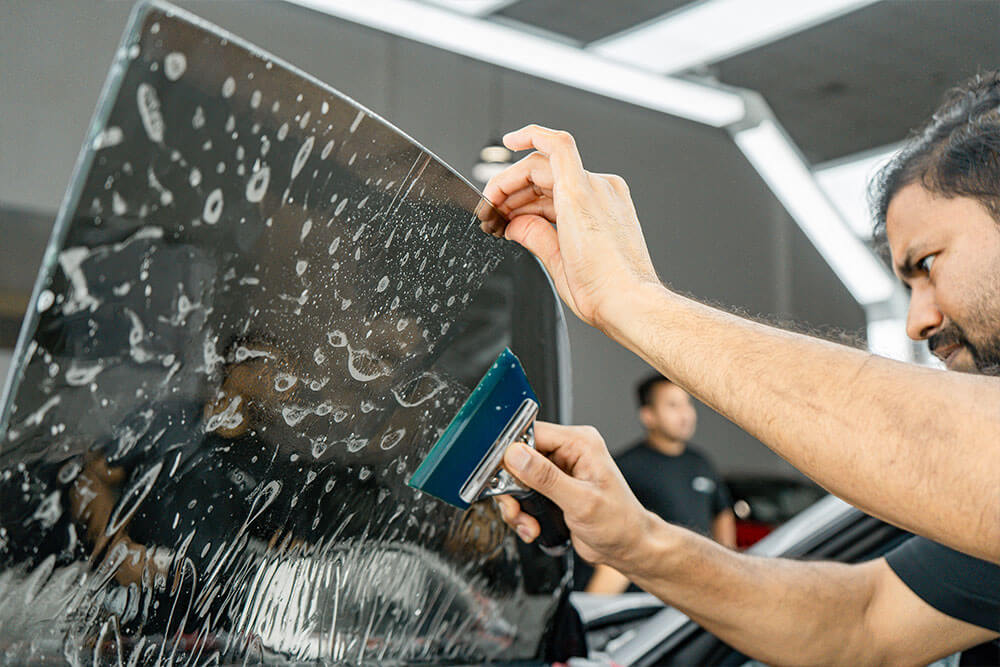
You’ve decided to get your car’s windows tinted—great choice! Window tinting offers a host of benefits, from protecting your interior to keeping you cool in Dubai’s heat. But there’s one part of your car that requires special attention: the rear window defroster. Those thin, delicate lines embedded in the glass are essential for visibility and safety, and if not handled correctly, they can be easily damaged during a tint installation.
Here’s a clear breakdown of the risks involved and what you need to know to ensure a safe, successful installation.
The Danger Zone: A Closer Look at Rear Defrosters
The rear defroster is made up of a series of fine, conductive metal filaments that are bonded to the interior surface of the glass. When you turn on your defroster, a low-voltage current passes through these lines, generating heat to melt frost and clear condensation.
The biggest risk during a window tinting installation comes from a lack of care and the wrong tools. A novice or inexperienced installer may use a sharp razor blade to cut the film directly on the glass, which can easily nick or sever these fragile lines. Once a defroster line is broken, that section of the window will no longer heat up, rendering it useless. The only way to fix a broken defroster line is a complex and often costly repair.
The Problem with Removal
Even when the original tint is being removed, the defroster lines are at risk. Low-quality films and improper installation can cause the adhesive to bond too strongly with the glass. When an amateur tries to peel this film away, there’s a high probability they will pull a defroster line right off with it.
A professional installer, on the other hand, knows the right techniques and uses a specialized steam or heat treatment to safely and gently dissolve the adhesive. This process allows the old film to be peeled away without putting any stress on the defroster lines.
The Right Way to Tint Your Rear Window
A professional window tinting service takes specific precautions to protect your rear defroster.
Digital Cutting: A reputable installer will use a computer-driven plotter to pre-cut the film to the exact size and shape of your rear window. This eliminates the need for any cutting on the glass itself, protecting the defroster lines from being damaged by a razor blade.
Specialized Tools: During installation, a professional uses soft, flexible squeegees designed to work the film around the defroster lines without damaging them. They have the skill and experience to navigate the delicate ridges, ensuring a perfect, bubble-free bond.
Correct Curing: After installation, the film needs time to cure. An expert installer will provide you with specific aftercare instructions to ensure the adhesive bonds correctly. This often includes waiting a few days to use your defroster, allowing the film to fully adhere and prevent any premature peeling.
At RMA PPF, we understand the delicate nature of a rear defroster. Our certified technicians are trained in the latest techniques for both installation and removal, ensuring that every detail of your vehicle is treated with the care it deserves. Your safety and the functionality of your vehicle are our top priorities.


